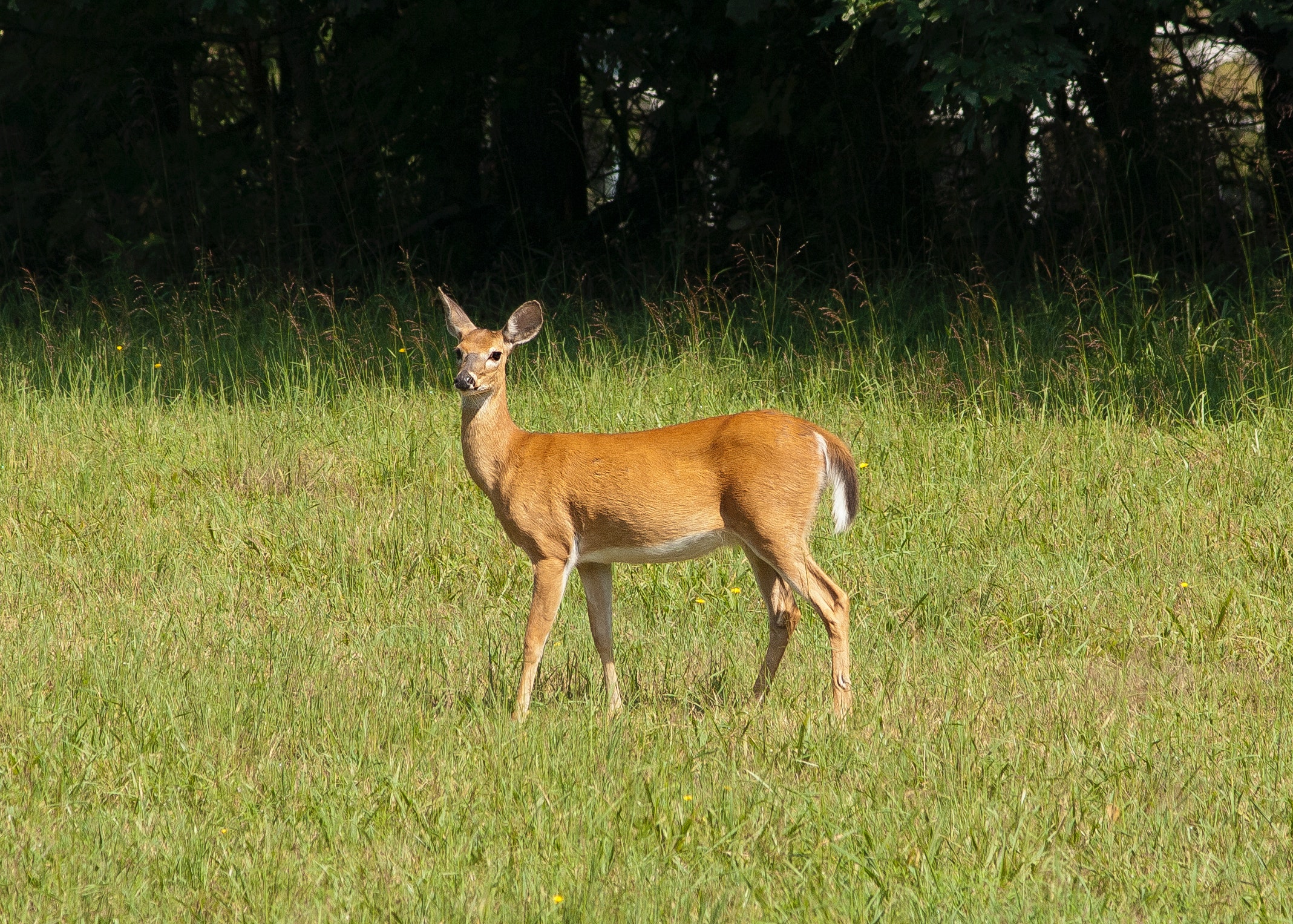Daylight Savings Time (DST) began on November 5th this year. When we lose an hour of sleep, we are more likely to make mistakes in our day-to-day lives. This is especially true for drivers. A lack of sleep makes it harder to concentrate and could cause more drowsy driving. On the other hand, gaining an hour can be just as jarring to your body’s natural routine. But drivers aren’t the only ones on the road who may be negatively affected by DST.

There are between one million and two million collisions between vehicles and large animals in the US every year. West Virginia, South Dakota, and Michigan are some of the states where drivers are most likely to hit an animal, though it’s a risk in any state. One of the most common vehicle and animal collisions is with deer.
Deer are common throughout the United States and are extra active in the fall around dusk. Of course, animals don’t use clocks to schedule their days like we do. When we change our clocks and adjust our commute times accordingly, deer do not adjust to our schedule, and suddenly, traffic peaks before sunset, rather than after sunset, putting us on the road at the same time as many deer.
A 2022 study suggests that the time change in the fall leads to a 16% increase in deer-vehicle collisions. Keeping the clocks the same year-round would therefore reduce traffic during peak deer hours in the fall, and reduce the number of deer-vehicle collisions.
There have been many attempts to end DST, but for now, we’re still observing the time change. If you’re out on the road and you encounter a deer, keep these tips in mind:
- Don’t suddenly and drastically swerve to avoid hitting a deer. Brake and hit the deer if you must. You are far less likely to be injured by hitting a deer directly than by swerving off the road or into oncoming traffic to avoid hitting one.
- When you see one deer there are probably more, and they often follow each other, especially if one starts to run. If you see a deer near the road, slow down and be on the lookout for more.
- Slow down and pay attention. Don’t waste money on gimmicks like deer whistles. Studies show that they are ineffective at deterring deer. The best way to avoid a collision with a deer is to be alert and ready to adjust your driving accordingly.
If you do hit a deer:
- Move your vehicle to a safe place if possible. Pull to the side of the road and turn on your hazard lights.
- Call the police. If the deer is still alive, don’t approach it yourself; wounded deer are unpredictable and can be dangerous. Let the police officer who arrives on the scene take care of what needs to be done.
Avoid hitting wildlife if at all possible, but don’t put yourself in danger in order to save a wild animal.
As we move closer to the dark days of winter, be extra mindful of your driving habits. Stay alert, and be ready to adjust your driving to avoid collisions at any time. Stay safe!
Are you interested in learning more about traffic safety?
Are you looking for defensive driving and traffic school courses? Do you want a discount on your auto insurance? Do you know a teen who’s ready to take an online driver education course?
Safe2Drive is here to help! We offer convenient online courses for drivers of any age! Visit our website today to learn about the online courses we offer in your state.
Daylight Savings Time (DST) began on November 5th this year. When we lose an hour of sleep, we are more likely to make mistakes in our day-to-day lives. This is especially true for drivers. A lack of sleep makes it harder to concentrate and could cause more drowsy driving. On the other hand, gaining an hour can be just as jarring to your body’s natural routine. But drivers aren’t the only ones on the road who may be negatively affected by DST.